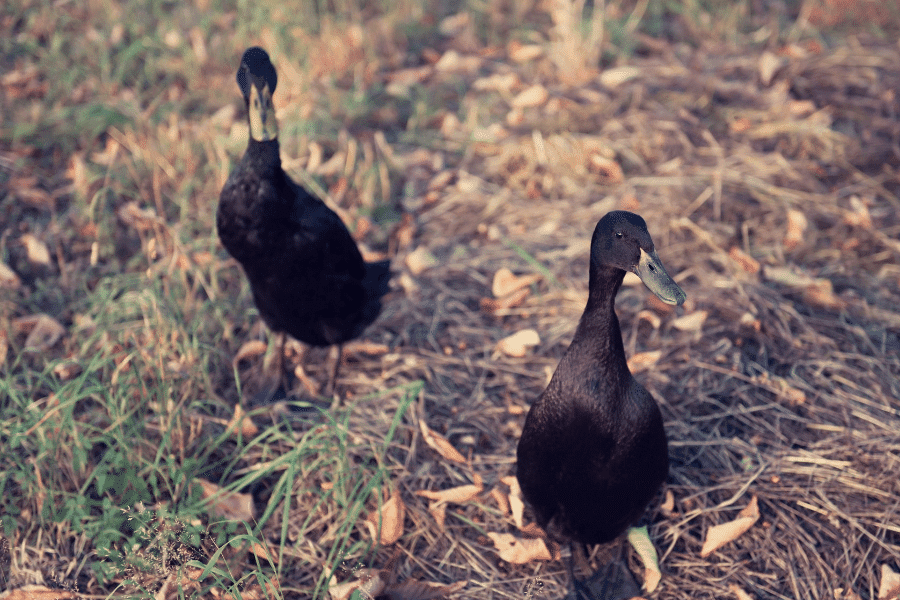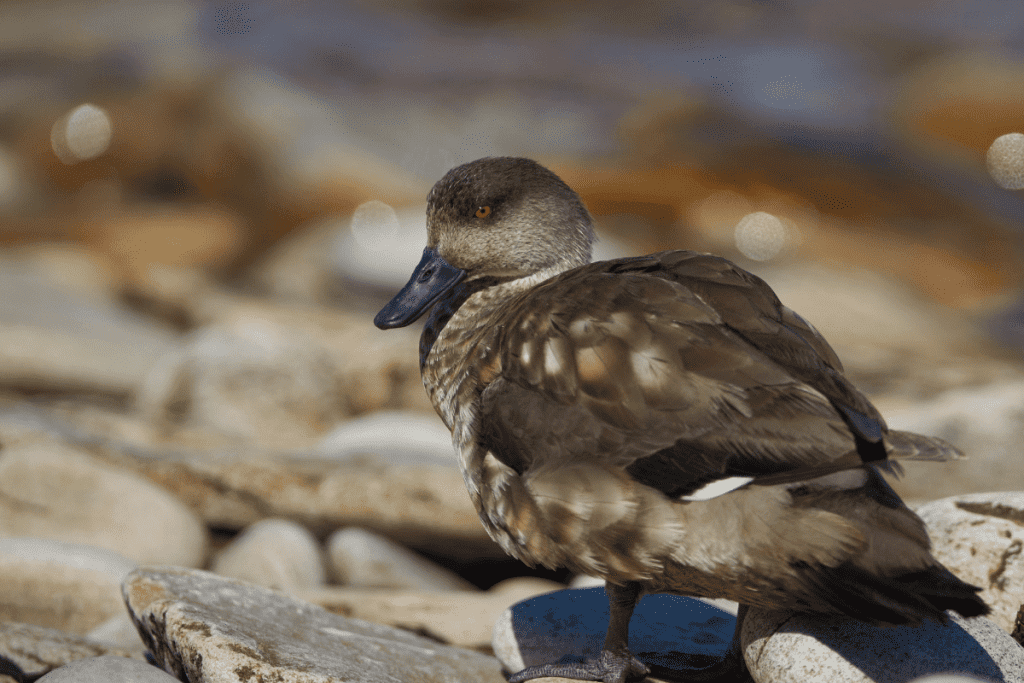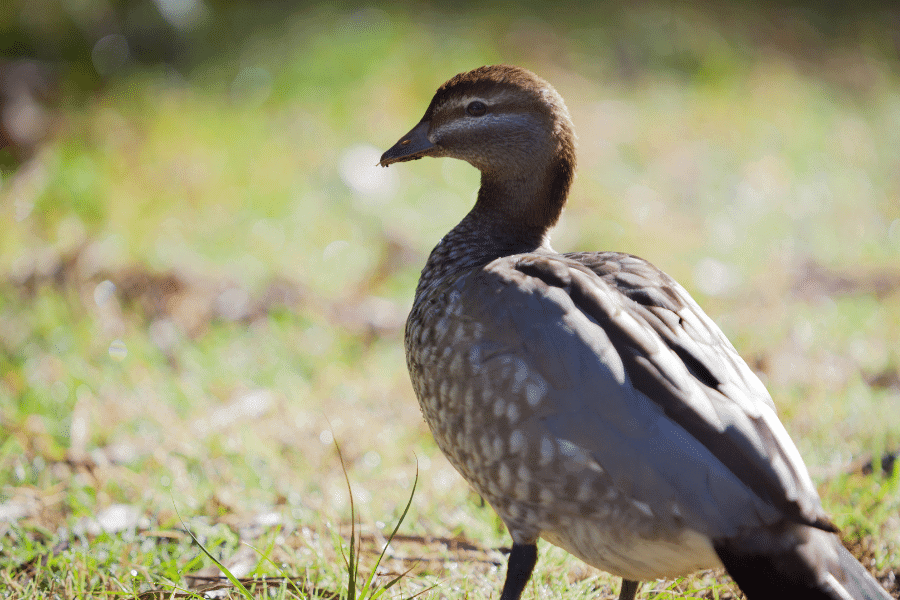Ducks not only make great pets, but they are also helpful on a farm because of their foraging habits.
There are several small duck breeds, and they are perfect for small farms or backyard pets.
The two types of small duck breeds are miniature ducks and Bantam ducks.
Miniature breed ducks are very small ducks with larger identical versions of them.
Bantam breed ducks are ducks that are specifically bred to be very small.
Both Bantam and miniature duck breeds are excellent because they do not require a lot of space, and they only need small pools compared to larger breeds.
Some Bantam and miniature duck breeds also provide excellent egg and meat production.
Keep reading for 15 of the most popular small duck breeds, including pictures.
Table of Contents
ToggleBlack East Indian Duck

This Bantam duck breed is also known as the East Indies duck, and it was initially bred in the United Kingdom in the middle of the 19th century before being brought to the United States.
The Black East Indian Duck has iridescent black and dark green feathers and dark bills and legs.
Some of these ducks grow white feathers as they get older.
These small ducks weigh less than two pounds.
The males, also known as drakes, weigh around 1.9 pounds, and the females weigh between 1.6-1.75 pounds.
East Indies ducks were originally bred for their looks, but they are also capable of laying 40-100 black or dark gray eggs in a year.
These ducks tend to be very quiet, and they are not as skittish as other Bantam duck breeds.
Miniature Crested Duck

The Miniature Crested duck was developed in Yorkshire in the 1980s.
This duck breed results from cross-breeding the Crested, Miniature Appleyard, and Call duck breeds.
These ducks have fluffy plumage with a large crest of feathers on top of their head.
The Miniature Crested duck comes in various solid colors, but they may also be multicolored.
Their bills and legs are usually yellow.
The males weigh 2.4 pounds, and the females weigh around 1.9 pounds.
While the Miniature Crested duck is mostly bred for its looks, it can lay 60 to 150 eggs per year.
It is best to keep a low ratio of one male to every 2-3 females in the same pen because the males tend to mess up the crests of the females during mating.
Call ducks were developed in the Netherlands after being bred from Mallards.
These ducks may be white, buff, butterscotch, gray, pastel, chocolate, or blue fawn.
Call Duck

They have pale orange bills and legs along with large blue eyes.
Adult Call ducks are only 14″ inches tall, and the males weigh 1.4-1.6 pounds while the females weigh between 1.1-1.25 pounds.
The Call duck breed was originally used for hunting, as their loud call would attract other ducks to the area.
Now, they are bred as pets or show ducks.
Call ducks are known for being very loud, but they have a friendly temperament.
Silver Bantam Duck

After World War II, the Silver Bantam duck was first bred in the United Kingdom.
This breed is often confused with the Miniature Silver Appleyard duck, but they are two completely different breeds.
These ducks have an iridescent green head with a light brown body and dark brown chest and wings.
The females in this breed are not as colorful, and their heads are buff-colored with lighter body colors.
They have orange legs, but their bills are usually a muted color similar to the rest of their body.
Silver Bantam ducks weigh between 1.75 and 2 pounds.
This breed generally lays 60 to 160 eggs per year.
They like to lay on their eggs, so it is best to remove them every day to prevent brooding.
These ducks are avid fliers, so keeping them confined to a small property may be challenging.
Mallard Duck

Mallard ducks are one of the most popular duck breeds in the United States today.
They typically live in ponds, lakes, rivers, and wetlands in the Northern Hemisphere.
The males of this breed are most well-known for their iridescent green head, the white ring around their neck, their white bodies, brown chest, yellow bills, and dark tail.
The females are more muted with pale brown bodies and darker bills.
Both sexes have blue feathers on the underside of their wings.
Mallard ducks weigh between 1.6 and 3.5 pounds when fully grown, with a wingspan ranging from 32 to 39″ inches.
These ducks are raised for their meat and eggs, and they are commonly hunted for sport because of their large population throughout the United States and Canada.
Unlike most domestic ducks, Mallards usually have the same mating partner throughout their life.
Miniature Silver Appleyard Duck

The Miniature Silver Appleyard duck is the small version of the standard Silver Appleyard duck, and it was developed in the 1980s by Tom Bartlett.
This duck is around half the size of the standard-sized duck.
Male ducks of this breed are very similar to the Mallard, with a glossy green head, white ring around the neck, brown chest, and cream bodies.
The females usually have a more pale cream body with brown stripes across the eyes and brown spots on the rest of their bodies.
The average weight of the Miniatur Silver Applewood duck is between 2.3 and 2.6 pounds.
These ducks are prolific egg layers, and they are known to produce anywhere from 200 to 270 eggs per year.
These little ducks have affectionate personalities, and they are excellent foragers.
They will quickly eliminate pests from small backyard gardens.
Related: Do ducks lay eggs every day?
Carolina Wood Duck

The colorful Carolina Wood duck is found in the United States and Mexico.
This beautiful breed of small ducks almost became extinct in the late 19th century because of unregulated hunting.
The Migratory Bird Treaty Act of 1918 ended unregulated hunting, and the duck’s habitat became protected, allowing the Carolina Wood duck population to thrive once again.
Male Carolina Wood ducks are very colorful, and they have green crested heads, light brown wings, darker brown chests, and red rings around their eyes.
The females of the breed have grayish-brown bodies with white rings around their eyes.
These ducks are very small, measuring just 19″ inches long and weighing 1 to 1.9 pounds.
Carolina Wood ducks are omnivores, and they eat small insects, seeds, small fruits, and berries.
Females will lay between 9 to 14 eggs and then incubate them for 28 to 37 days.
These ducks also enjoy perching on elevated places like tree branches.
Welsh Harlequin

The Welsh Harlequin was first created in Wales by Leslie Bonnet in the late 1940s.
However, the duck breed was not popular enough to sell in the United States until the 1980s.
The Welsh Harlequin was finally accepted by the American Poultry Association’s Standard of the Perfection in 2001.
These ducks are a hardy breed, as they are not susceptible to illness or disease.
They have lean, cream-colored bodies, black bills, and small dark blue patches of feathers on the underside of their wings.
The ducks weigh between 4.4 and 5.5 pounds when they are fully mature, and they are capable of laying up to 330 eggs per year.
Welsh Harlequins are also known for their calm and docile temperaments, making them easy to care for.
Khaki Campbell Duck

The Khaki Campbell duck was first bred in Gloucestershire, England, in the early 1900s by a woman named Adele Campbell.
As the name suggests, these small ducks usually have khaki-colored bodies, but they may also be black or white.
They typically have dark bills and legs.
Khaki Campbell ducks weigh between 4 and 5 pounds when fully mature.
They are a dual-purpose breed, raised for both meat and egg production, and females can lay 280 to 300 white eggs in one year.
Khaki Campbell ducks make excellent backyard pets because of their friendly and docile temperament.
Mandarin Duck

The Mandarin duck was first bred in China and Japan, and it is one of the smallest duck breeds in the world.
These very small ducks only weigh between 18 and 22 ounces when fully mature.
Aside from ensuring these ducks are legal to own in your area, they are excellent fliers capable of traveling over long distances, so they would be almost impossible to contain in a small space.
Mandarin ducks are known for their extremely colorful plumage in colors ranging from iridescent green, blue, golden brown, white, and black.
These ducks are very quiet, and the females do not quack.
However, they can make clucking noises if they see a predator, such as a fox.
Magpie Duck

Magpie ducks were first bred in Wales during the 20th century by Oliver Drake and M.C. Gower-Williams.
These ducks were created by cross-breeding a Belgian Huttegem and a Runner duck.
They were first introduced to the United States in 1963, but the American Poultry Association did not recognize them until 1977, and they did not become popular until 1984.
Magpie ducks have black caps, white bodies with gray or brown patches along their wings and back, yellow bills, and orange legs.
Further reading: 10 Popular Black And White Duck Breeds
The small ducks usually weigh around 4.4 pounds, but males may weigh up to 7 pounds when fully mature.
These ducks are a dual-purpose breed, raised for their meat and eggs.
Females can lay between 220 and 290 large white eggs per year, and the ducks have a lifespan of up to 12 years.
Unfortunately, Magpie ducks are a critically endangered species, and their populations of wild ducks may be completely diminished within the next ten years.
Runner Duck

The Runner duck tends to stand very erect, almost like a penguin.
These small ducks got their name because they tended to run instead of waddle.
Runner ducks are very similar in color, with white or cream-colored bodies and orange bills and legs.
These ducks typically weigh between 3.1 and 5.1 pounds.
In addition to being raised as pets or show ducks, females can prolific egg production.
A female Runner duck may lay between 300 to 350 eggs in one year.
Miniature Australian Spotted Duck

Despite its name, the Miniature Australian Spotted duck is thought to have originated in the United States.
Males of this small duck species may have a blue or green head, dark brown chest, cream-colored wings with black tail feathers, orange legs, and a yellow bill.
The females are not as colorful, and they usually have a silver head, a cream-colored body with brown speckles, and an orange bill and legs.
These ducks are very small when fully grown, weighing in at just 2 to 2.2 pounds.
Females will lay 50 to 125 blue, green, or cream eggs in one year.
Miniature Australian Spotted ducks have a calm and friendly temperament, but they can make a lot of noise.
The females are very broody, and they tend to be excellent mothers.
Not much is known about the origins of these very small ducks, but they are a critically endangered species.
Miniature Overberg Duck
The Miniature Overberg duck is originally from the Netherlands, and they have only recently been introduced to the United States.
Males have a dark green head, a dark brown chest with cream-colored body feathers, and an orange bill and legs.
The females are a silvery color with brown splotches.
These small ducks weigh between 30 and 36 ounces and are known to have a calm and friendly demeanor.
Silky Duck
The Silky duck was first bred in America, and it is known for its soft, lacy feathers similar to Silky doves.
The colors of this duck range from white, black, gray, dusky, Mallard, and snowy varieties.
Silky ducks are very small, and they usually weigh between 28 and 36 ounces.
They are very rare ducks, and they do not fly.
Their temperament is friendly, alert, and curious, and they are excellent for first-time duck owners and being backyard pets.
If you’re getting a duck, check out our massive list of the best duck names to use on your feathery friends.
How useful was this post?
Click on a star to rate it!
We are sorry that this post was not useful for you!
Let us improve this post!
Tell us how we can improve this post?
